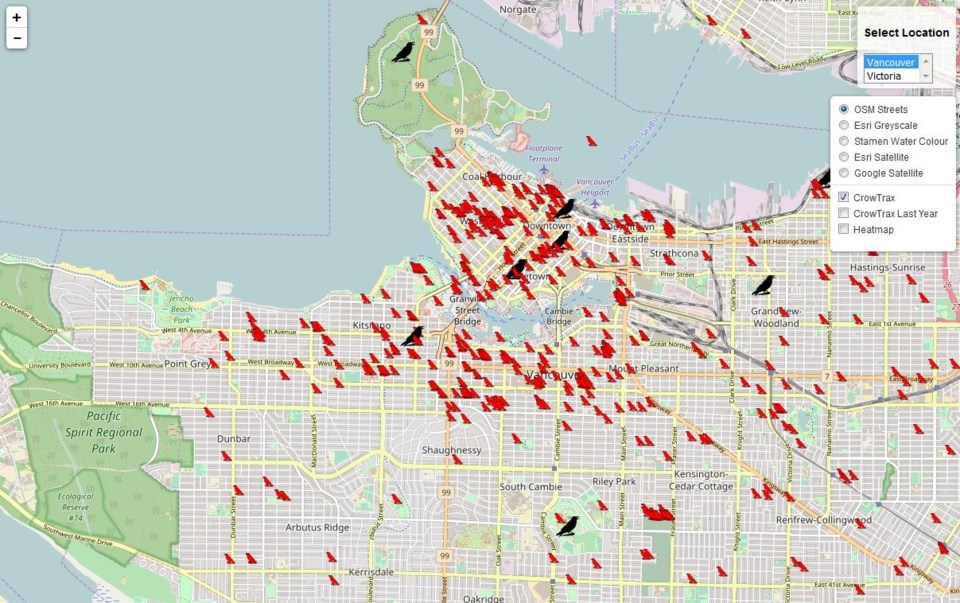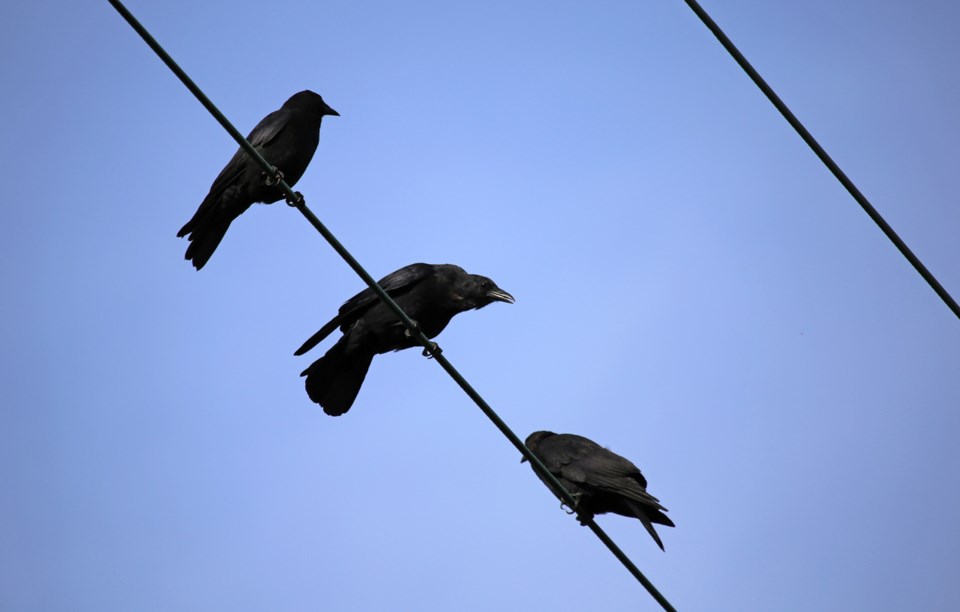Jim O’Leary usually dons a beige Tilley hat when commuting to his job at Langara College — not for casual, middle-age-man fashion purposes but survival.
O’Leary thinks the hat deters aerial attacks from a particularly cranky crow that’s been known to swoop down on unsuspecting pedestrians leaving and entering the Joyce SkyTrain station. And he should know. He’s the creator of Crowtrax, an open-source Geographic Information System (GIS), which he developed as a Continuing Studies instructor to map crow attacks across Vancouver.
With nesting season running April to July, getting dive-bombed by a protective crow has become a rite of passage for most Vancouverites.
Over the years, O’Leary has heard it all — from attacks that draw blood and talons caught in victims’ hair to roving gangs of the winged marauders that chase their targets for blocks.

When he launched the site in 2016, it garnered about 800 reports — now he receives approximately 1,500 accounts of “human/crow interaction” a year. According the Crowtrax data, danger zones include downtown and the West End, which doesn’t surprise O’Leary.
“Where you have more people, you have more restaurants and, inevitably, you have a French fry on the sidewalk, and that’s what crows like,” he says. “In the downtown area, in particular, the sidewalks are very narrow so the trees are very close to buildings, and the crows like the tall leafy trees. So when you get tall leafy trees very close to people and restaurants, you’re going to get a lot of crow/human interaction.”
Last year, Crowtrax added a new feature where users could indicate whether or not their avian encounter was with local winged-celebrity Canuck the crow. However, the feature has failed to take off, admits O’Leary.
“Maybe people don’t realize it’s Canuck the crow, or maybe it’s that Canuck the crow doesn’t attack many people.”
While tracking airborne assaults has provided O’Leary insight into crow behaviour, it’s also given him a window into the soul of those on the receiving end of such attacks.
“Looking at the reports over the years, I think there’s a sense of therapy,” he says. “It’s not like when you see a dog growling, where you can prepare. Crows generally attack you from behind. And it’s very offending. And people have a need to say, ‘I’m a person and this is what happened to me.’”
O’Leary, who vets all the reports before they go up on the map, says he’s noticed another common online behaviour of humans.
“There were a lot of bogus reports at the start. Someone would report, ‘A crow followed me into a bar and ran off with my girlfriend’ — that sort of thing. So I didn’t want to have those up [on the site] because it takes away from the credibility.”
To report a crow attack or see crow hotspots across the city, go to giscourses.net/crowtrax/crowtrax.html.
Read more Vancouver from Above stories HERE.



